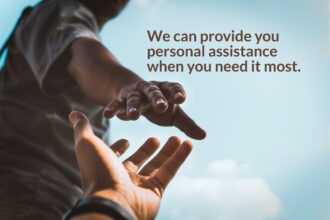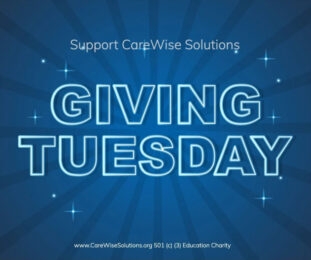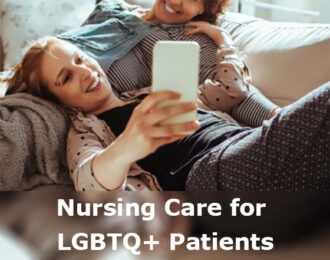The Healing Power of Music and Friendship
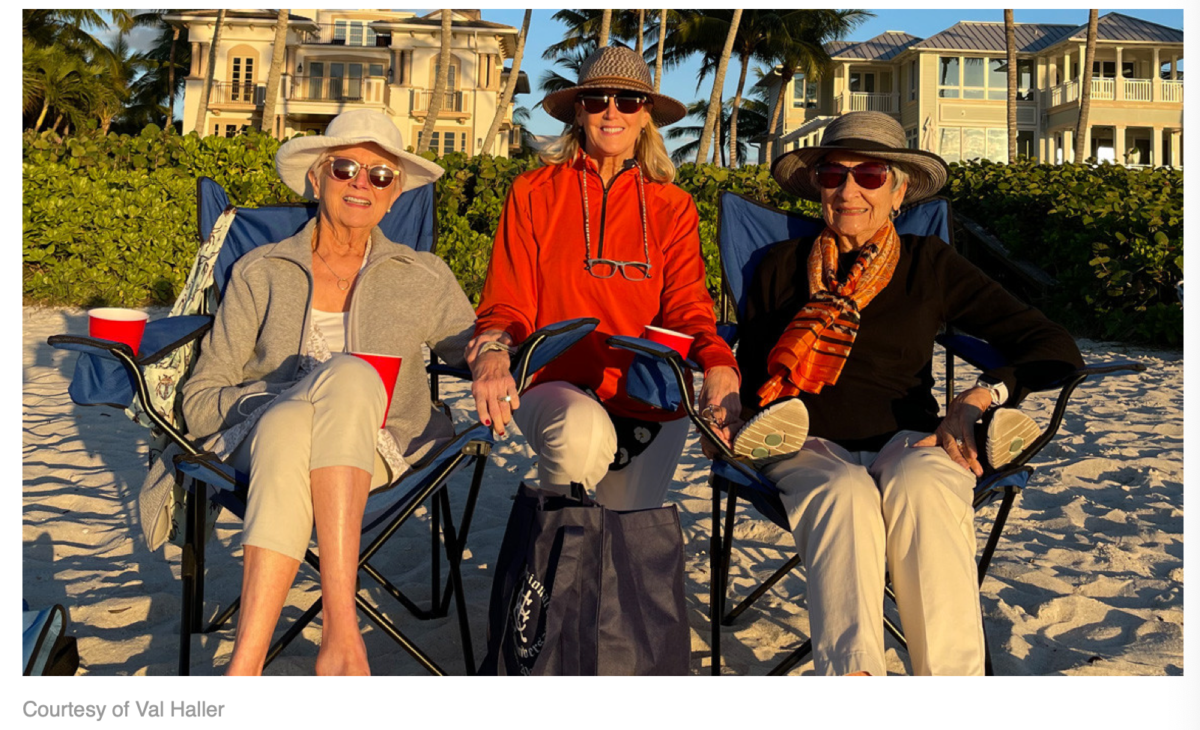
By Lee Woodruff, January 28, updated February 3, 2008
United in grief, an extended family uses music to soothe and connect. Mark and Val Haller, 64, of Winnetka, Illinois, had planned to celebrate Christmas with their four grown sons and spouses, three grandchildren and their parents. As positive COVID tests began to ground family in various cities, they struggled with the dashed hopes and disappointment felt by so many this past holiday season.
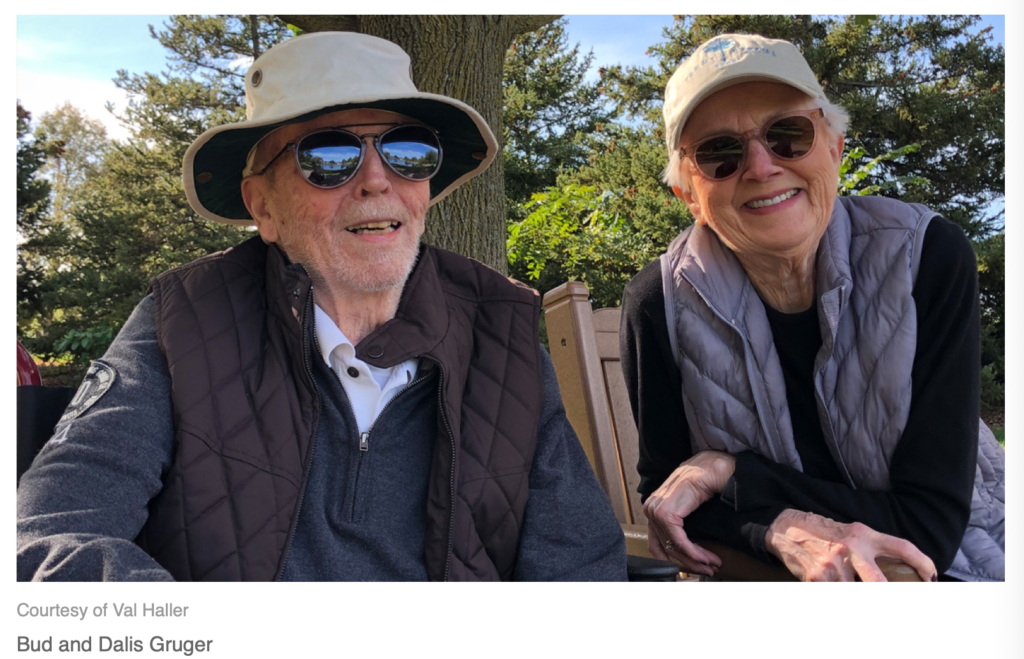
The last year had been hard for other reasons. Within a few months of one another, both Val and Mark lost their fathers, Edward (Ed) J. Haller, Jr., and Walter (Bud) H. Gruger, Jr. Their parents had each been married for 67 years, and both men had served their country and were beloved patriarchs and devoted spouses. While the two sets of in-laws were fond of one another, they’d never spent enough time together to cement a deep friendship. Enter holiday season 2021.
What was supposed to be a fun and lively gathering had suddenly shrunk down to Mark and Val with their grieving mothers. Val’s mom, Dalis Gruger, 91, and Mark’s mother, Joan Haller, 88, had never been alone together. Mark and Val were slightly worried about how the vacation would flow, especially without the distraction of the grandchildren and multiple activities. But in the end, their mothers’ feelings of loss ended up connecting the women as friends and deepening the relationship among all four of them.
Music as soother
One big healer for all of them was the power of music in helping to remember the men during happier times and in finding relief from the sad moments. Music, as it so often is, became a balm and connective tissue. And luckily, Dalis and Joan were in the right house.

Val Haller knows a thing or two about music. It’s not just her passion, but it has been her livelihood for the past 15 years. She’s the founder of ValsList, a music discovery platform that helps busy adults keep up with new music by bridging the music gap between generations. Her “Music Match” column in the New York Times paired vintage artists with new and emerging artists.
As a lifetime music fan, Val began making playlists as a hobby for other people. Constantly on the hunt for new artists, she would share her discoveries with her parents and children to spark conversation and connection. She routinely received feedback about how her playlists had been a gift, and people always commented on the new artists she would sprinkle in. “Listening to each other’s music across generations can not only promote fun conversations and memories,” says Val, “it can connect new pathways in the brain to learn something new.”
The science behind music’s feel-good vibes
Most of us can relate to the way a beloved song can lift us up when we are down — and science backs that up. “Music lives in a different location in your brain than the thinking and speaking centers,” says Peter Costantino, M.D., executive director of the New York Head and Neck Institute in Manhattan. “When someone is consumed with grief or worry, music and its area of the brain can override the emotions that often trap us in negative thoughts and help in dealing with the stress of loss or grief of illness. This can also positively affect blood chemistries and boost the immune system.”
SPOTIFY PLAYLIST: Soothing for Caregivers and Loved Ones
When Mark’s father had a stroke that led to his death, Val created a playlist that her husband could hold up to his ear and help keep him calm. And when her own father began to succumb to Alzheimer’s and Parkinson’s, she made playlists that her mother could use to soothe his agitation and create a better day for them both. “One playlist included my mom’s favorite, “Harvest Moon” by Neil Young.
While my dad was rarely on his feet, to my surprise my sister sent me a video of he and my mom slow dancing to the song,” recalls Val. “My niece was so touched by the video that she uploaded it to TikTok (and it immediately garnered thousands of views). We could literally watch how the music tapped into his old memories and reduced his anxiety and heart rate.”
When her father was dying in hospice, Val’s curated a playlist of softer, calming music that she hoped would give him comfort, even though he could not respond. “I’ve read that hearing is one of the last senses to go,” says Val, “and that means we can all give loved ones a sense of peace and calm toward the end, not just to the dying person but to the caregiver as well. Music is the gift that can provide a shared experience during the end of life.”
One of the ways their families had always connected was through her ValsList house concerts in Chicago. Emerging bands and touring artists coming through Chicago would perform and stay at the Hallers’ home. Throughout the years, and even after Val’s concerts moved to bigger venues, both sets of parents would attend, which deepened their appreciation and curiosity about what was happening in the music world. “We loved watching all four of our parents being exposed to new artists and kinds of music,” says Val. “I once joked with my mother that Dad was going to be jealous when a cute lead singer of the band came and sat beside her to chat!”
“All of us are set in our ways,” adds Mark, “but music is such a universal language, when you ask people what songs or artists they like, and then make a gentle suggestion about something new, it’s amazing what can happen. The house concerts gave us the chance to experience that discovery with our parents.”
Finding a new normal
When both women first came together in Florida, it was difficult for Mark and Val to witness their pain. Each woman grieved in her own quiet way. “They were figuring out how to organize their days without their husbands and learning to make decisions alone,” recalls Mark. “It had been so long since both of them had been able to wake up and ask themselves what they wanted to do that day.”
While all of them were relieved that their loved ones had been released from pain, this first holiday without them was a sorrowful milestone, especially without kids and grandkids to bring a different energy. Talking about their memories and playing music during this time helped elevate all their spirits and change the mood. It began not only to foster warm memories about the past, but also to build a hopeful and positive bridge to the future.
“Mark and I tried to take this opportunity of time and proximity to help them figure out what their daily lives could look like. We went on walks and gave them a choice of activities, but never wanted to push. We didn’t want it to feel like summer camp,” says Val. “But we also left them lots of time alone to talk to one another, because we understood there were things they might want to share without us.”
A friendship blooms
Slowly, the women began to embrace an outing or two, and to learn new ways to stay connected to the kids and grandkids through technology. While doing a video chat with the family over the holiday, Val encouraged her mother that it was OK to just call them spontaneously, which gave her the confidence to do it herself. Connecting through social media became other tutorials from Mark; both mothers asked him to teach them how to use Venmo.
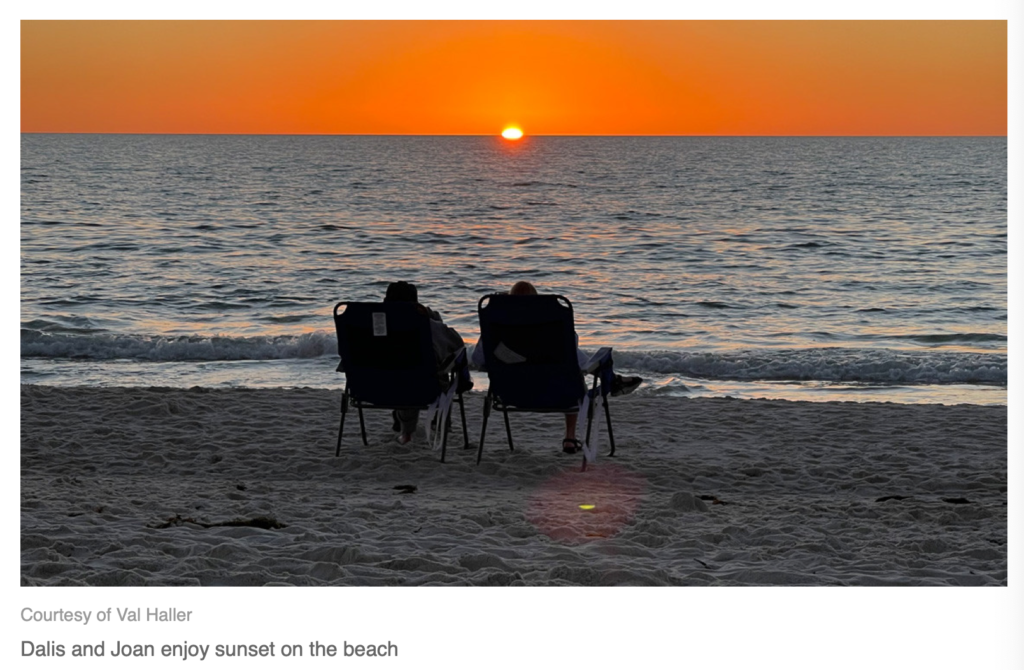
“My mother is eager to learn everything she can to be able to stay connected and I get tech calls frequently, which is a total win,” laughs Mark. “She’s now talking like Dick Tracy on her iWatch all the time.”
By Christmas Eve, the growing connection and friendship between Dalis and Joan was palpable. They were enjoying one another’s company and looking toward the future in more hopeful ways. Late that afternoon they all carried chairs and a bottle of wine to the beach to watch the sunset.
Val had created a 1950s playlist to enjoy the view and ease them into their first holiday without the men. “The sun was sinking, and a sailboat appeared on the horizon just as Frank Sinatra came on,” remembers Mark. “We had used the song “My Way” in my dad’s eulogy, as the lyrics describe him to a T.” Val added, “My Dad loved to sail and when I spotted the boat, I knew that was him saying hi to us. We all sat there listening to the music, thinking our own thoughts, in absolute peace.”
Lee Woodruff is a caregiver, speaker, and author. She and her husband, Bob, cofounded the Bob Woodruff Foundation, which assists injured service members and their families. Follow her on Twitter and Instagram.
